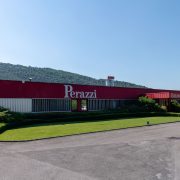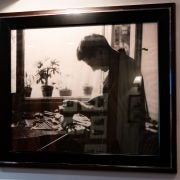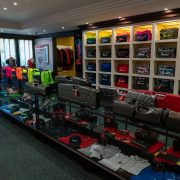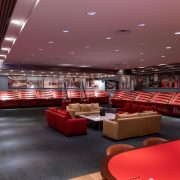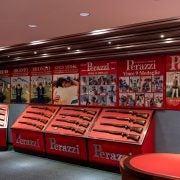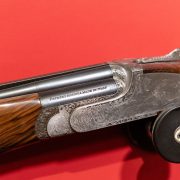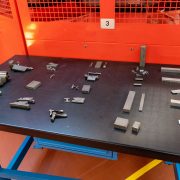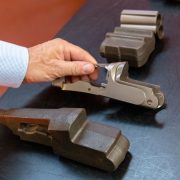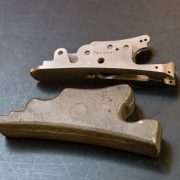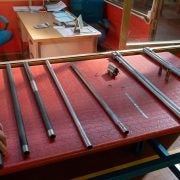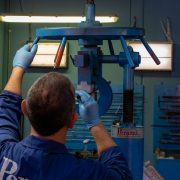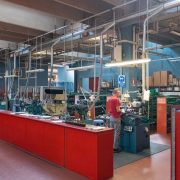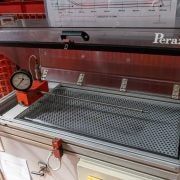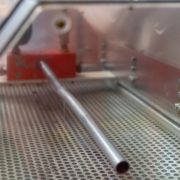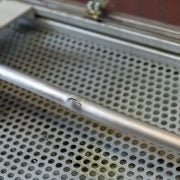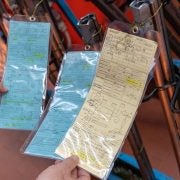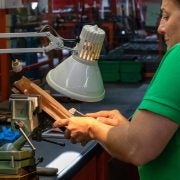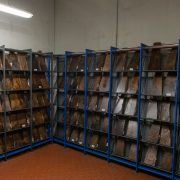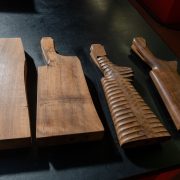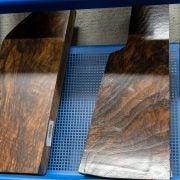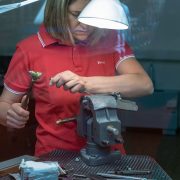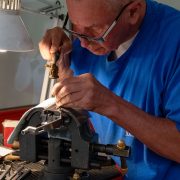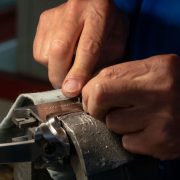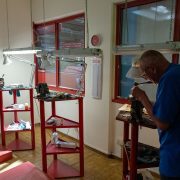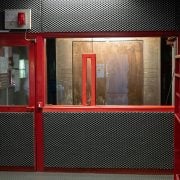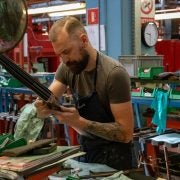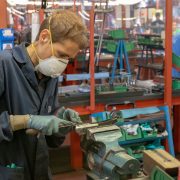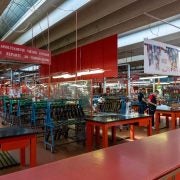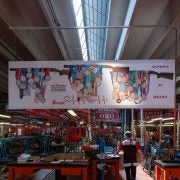Perazzi Factory Tour Experience
Dickson 12.30.18

When it comes to quality shotguns, there are very few places to visit but to go to Italy where the history of gun making traces back well over 500 years ago. Within the premium custom shotgun category where the starting price is at $7,500 and up, there is none other than Perazzi which will offer you a truly unique experience.
Perazzi was founded in 1957 by Daniele Perazzi. Born in 1932 after World War One and before World War Two started, Daniele worked as a gunsmith at various manufacturers in Brescia including Beretta before he decided to open his own shop at the young age of 20. At the age of 25, he founded Perazzi Armi. Initially, he worked in a small workshop and work closely with his clients to provide them guns specific to their requirements. This ethos is still something that is being carried out today.
After Daniele’s death in 2012, his son and daughter, Mauro and Roberta have taken over the company.
In the world stage, both Perazzi and Beretta dominate the Olympic scene in both trap and skeet disciplines. It all started in 1968 in the Tokyo Olympic when Ennio Mattarelli representing Italy won Trap Gold with his MX8.
The Perazzi factory is about 20 minutes east of Brescia, away from the famous Gardone Valley. As soon as you set foot inside the building, you will be greeted by a beautiful receptionist. Their facility have one of the most elegant show room floors I have ever visited. All the displays are covered in rosso color suede and the whole floor is brightly lit, ready for any customers to inspect for imperfections on the guns, which of course there is none. To the left side of the showroom, there’s a pro shop that have every kind of gear and apparel you can find that will bear the Perazzi name. There’s almost anything you can think of, from shooting glasses, to carry cases, to dress shirts and watches. There’s even golf balls with Perazzi name on them. All are of course at a premium price.
When you step beyond the showroom to the factory, there is a giant banner hanging above showing all 54 Olympic metals. It says “Perazzi shooters won the most Olympic metals in the history of clay shooting.” The factory floor is open concept which allows visitors to look at every single process of manufacturing.
Each receivers are made from steel forgings then CNC machined. They are further hand fitted to the monoblock by sanding to get a perfectly tight fit. As with all premium guns, there’s nothing made of metal injection molding (MIM) or casting. Every metal component is carefully machined and polished to fit.
The barrels are the most important part of any gun, let alone a competition grade shotgun. It needs to be rigid but not too stiff that will cause an issue during catastrophic failure with either the ammunition or an obstruction in the barrel. Perazzi produces their own barrels which separates them from many other shotgun manufacturers whom order their barrels through a barrel manufacturer. They can control the quality 100% when they are made in house.
One of the more skilled processes on barrel making is the process of barrel straightening. It requires the gunsmith to mount the barrel on the barrel straightening machine and look through the barrel against a wall that has a light box mounted with a black line taped horizontally. If the barrel is not straight all the way through, the gunsmith has to bend the barrel using the machine until the barrel is perfectly straight. There are very few manufacturers that do this, as it is very time consuming but also the gunsmith needs to have the skill to perform this task which takes years to master. The only other manufacturer that I’m aware that does this is Heckler & Koch in Oberndorf, Germany.
To further differentiate themselves, they randomly perform over pressure tests on the barrels to ensure they are made to spec as well as exceeding it. They performed this test in front of my own eyes and I was amazed how much the barrel is allowed to bend as well as the pressure being applied – 16 times the normal pressure – before exploding. The result is the barrel blows in the middle between the muzzle and breach, away from the shooter’s eyes and face.
Customers are invited to come in early in the morning to get measured and in the afternoon the stock will be partially cut forming the right length, cheek height, cast and grip and it will get mounted on a gun for test fire at their indoor test fire range for the customer to pattern the gun. There’s also a larger, outdoor range right behind the building for the gunsmith to test fire the guns before going out to customers.
After getting measured, you will be brought to the wood room where you get to pick and choose your own stock. There are different grades. Number one is the lowest quality and five in the highest. Within grade five, there’s A, double A and triple A which further refines the rating and quality of the wood.
The checkering on the grip and forend are done manually using hand checkering tools. These are jobs reserved for the 3 skilled female technicians in the factory. They do this 8 hours a day, with their arm steadily going up and down across the stock to create the checkering patterns.
Even though Perazzi is known for competition shotguns, they also have a line of game guns with heavy engravings and gold inlays. During my visit to the engraving department, there was an engraver and his daughter who also happen to be an engraver working. It was delightful to see the tradition of engraving carries on in the family.
Before I leave, I had a chance to meet Mauro Perazzi briefly for a quick handshake. I thanked him for allowing me to visit and get a tour of his facility.
I hope to have a Perazzi shotgun in the near future.
